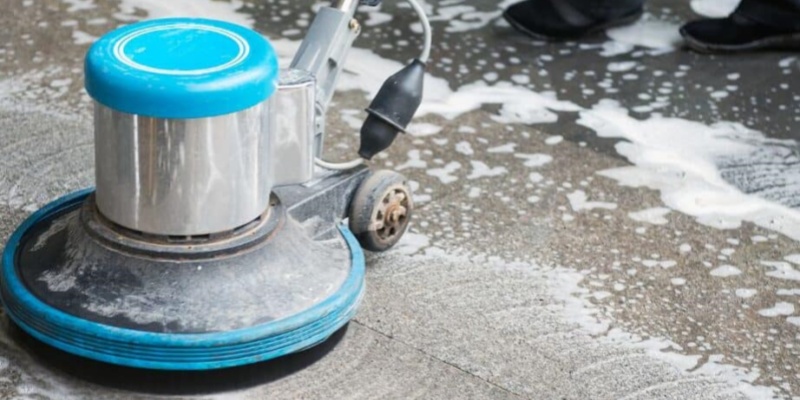Polishing terrazzo floors goes beyond simply creating a shiny surface; it is a scientifically intricate procedure that involves understanding material properties, abrasives, friction, and chemical reactions. Terrazzo is a composite material made up of marble, granite, quartz, and glass chips set in cement or resin binders. Each of these components reacts differently during the polishing process, making it a fascinating subject for exploring how surface science affects both the appearance and longevity of the floor.
The hardness of the chips and binders is crucial in selecting the right abrasives and polishing methods. The Mohs hardness scale, which assesses a material’s resistance to scratching, is commonly used to analyze the components of terrazzo. Diamond grinding tools, which have a high Mohs rating, are vital for polishing terrazzo because they can effectively cut and refine a mix of hard and softer materials. This variation in hardness allows diamond abrasives to selectively polish tougher surfaces like marble and granite while quickly smoothing softer elements, resulting in a uniform and balanced finish.
Friction and heat are also important factors in the terrazzo polishing process. As polishing progresses, each abrasive grit increases friction, generating heat that slightly softens the binder. This controlled heating helps to close microscopic pores and imperfections on the floor, enhancing its smoothness and reflective quality. However, too much heat can lead to thermal damage, particularly in resin-based terrazzo, so it is essential to manage friction and temperature to avoid problems like discoloration or weakening of the binder.

The principles of the light reflection and refraction contribute an optical dimension to terrazzo floor polishing. A polished terrazzo floor appears glossy because the surface roughness is minimized to a point that allows fro specular reflection, where light bounces off evenly, creating a mirror-like effect. Achieving this uniform reflectivity involves a careful balance of micro-abrasion and polishing. As the surface is refined at a microscopic level, each aggregate chip reflects light in harmony with the others, showcasing the unique mosaic pattern of the terrazzo and enhancing its visual appeal.
TransGrind Diamond Tooling, a professional manufacturer and supplier of premium diamond grinding tools, brings science-driven innovation to terrazzo floor polishing. Our high-performance, durable, and precise tools are crafted to handle the unique challenges of terrazzo’s composite materials, ensuring optimal results in grinding and polishing. To explore our wide range of specialized products designed for exceptional results, visit us at www.transgrindtools.com.